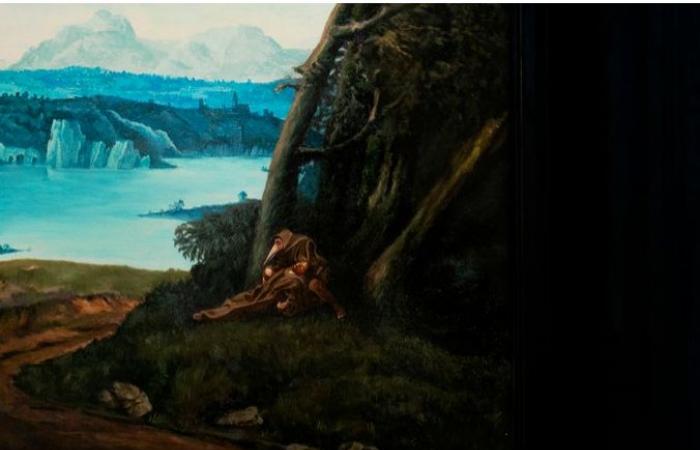The Draguignan Museum of Fine Arts is currently offering a very special exhibition with an incredible history.
Indeed, originally from the south of France, Marguerite Maeght knows the story of Saint Roseline well, whose miracles are famous in this region. She then decides to ask him for a grandson (she already has several granddaughters). Her wish granted, the collector and patron feeling indebted, called on her closest artist friends to tackle the restoration of the chapel dedicated to the saint, located in Arcs-sur-Argens. Giacometti, Chagall, Bazaine and Ubac will participate in this project and will give this building a celestial dimension.
Marguerite Maeght’s wish is presented at the Draguignan MBA until September 22.
Excerpts from the exhibition catalog
Chagall and the mosaic
by Grégory Couderc, scientific manager, Marc Chagall national museum
The Meal of the Angels or The Miracle of Saint Roseline, 1975,
Sainte-Roseline Chapel, Les Arcs-sur-Argens, mosaicist Michel Tharin
Just like stained glass, tapestry, sculpture or ceramics, mosaic is one of the new artistic expressions that Marc Chagall experimented with after the Second World War. It opened new avenues for the artist in his research on light, materials and color but especially in the creation of monumental works that dialogue with architecture. The mosaic of the Miracle of Saint Roseline preserved in Les Arcs-sur-Argens is part of a series of fourteen mosaic projects spread across the world, six of which are in the south of France. Unlike the stained glass windows that mainly present biblical themes, Chagall’s mosaics are distinguished rather by their secular themes: Message from Ulysses, Orpheus, The Four Seasons, The Lovers… The only mosaic referring to the New Testament and the Lives of the Saints in the Christian religion, the mosaic of the Miracle of Saint Roseline is one of four whose theme is religious with The Wailing Wall in Jerusalem, The Chariot of Elijah for the Marc Chagall National Museum in Nice, Moses saved from the waters for the Vence Cathedral. (…) Made in a semicircular arch, the mosaic represents the meal table prepared by two majestic angels. On the right, Roseline is winged to recall her exchange with God, which makes her an intercessor of the divine message.
In the background, the city of Avignon is overlooked by a sun wrapped in thousands of flowers evoked by touches of color, which recall the first miracle of the roses, the one where, after having hidden food in her apron to give to the poor and taken by surprise by her father, she opened her apron and an armful of roses fell out. As with Abraham and the Three Angels in the Biblical Message cycle, Chagall was inspired by the 15th century Russian icon, The Trinity of Rublev, dated 1410-1427, kept at the Tretyakov Gallery in Moscow. For the creation of this monumental mosaic of 6.48 m×5.70 m, Chagall collaborated for the second time with the mosaicist Michel Tharin. At the artist’s request, the 17th century altarpiece was moved into the chapel to accommodate the mosaic and offer the necessary perspective for its contemplation. Nestled under a semicircular arch, the mosaic offers a dynamic and vibrant composition, playing with the subtle reflections of light and the textures of the multiple tesserae that compose it. As with all of his mosaics, Chagall imagines the scene on a light background, but here, the touches of bright colors are rather distributed around the perimeter of the scene. The marble tesserae in different shades of white and cream, with a very matte finish, contrast intensely with the colored, shiny glass paste tiles that reflect the light. These plays of light, illusionistic effects of a work in motion, transform the architectural space into a unique visual and spiritual experience.






